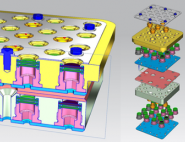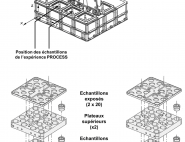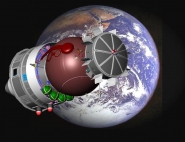CNES projects library
C
I
M
P
S
U
Bi
Expose
Viewed from Earth, space seems a very tranquil place. In fact, nothing could be further from the truth; molecules and organisms exposed to the space environment are constantly bombarded by ultraviolet radiation and cosmic particles, and have to endure extreme temperature variations. This environment also induces many chemical reactions. What organic molecules might there be on comets or the surface of Mars? What molecules are produced at the top of Titan’s atmosphere? And can certain terrestrial organisms survive in the vacuum of space?
These are the kind of questions the European EXPOSE facility was designed to answer. The modular, multipurpose payload has been mounted outside the ISS on three occasions, for missions lasting 18 to 24 months: EXPOSE-E (E for Europe, attached to the European Columbus module) in 2008, EXPOSE-R (R for Russia, attached to the Russian Zvezda module) in 2009 and EXPOSE-R2 in 2014.
CNES is providing funding and technical support to French research laboratories selected by the European Space Agency (ESA) to perform experiments on EXPOSE, for example PROCESS on EXPOSE-E, AMINO on EXPOSE-R and PSS on EXPOSE-R2.
Mission's news feed
-

The incredible journey of PSS!
The Soyuz capsule which landed in Kazakhstan on March 2, 2016, brought back 3 astronauts to Earth. Among them, Scott Kelly broke the spaceflight record by living 342 days (and 520...
April 1, 2016
-

Results of the PROCESS experiment on board EXPOSE-E
The PROCESS experiment (PRebiotic Organic ChEmistry on Space Station) on board EXPOSE consisted in expose samples mainly composed of organic molecules during 18 months in 2008 and...
June 11, 2012
-

Organic matter would have a tough time on Mars
The UVolution photochemistry experiment has delivered its 1st results. Certain organic molecules would be degraded by the Sun’s UV rays in space.
August 2, 2010


